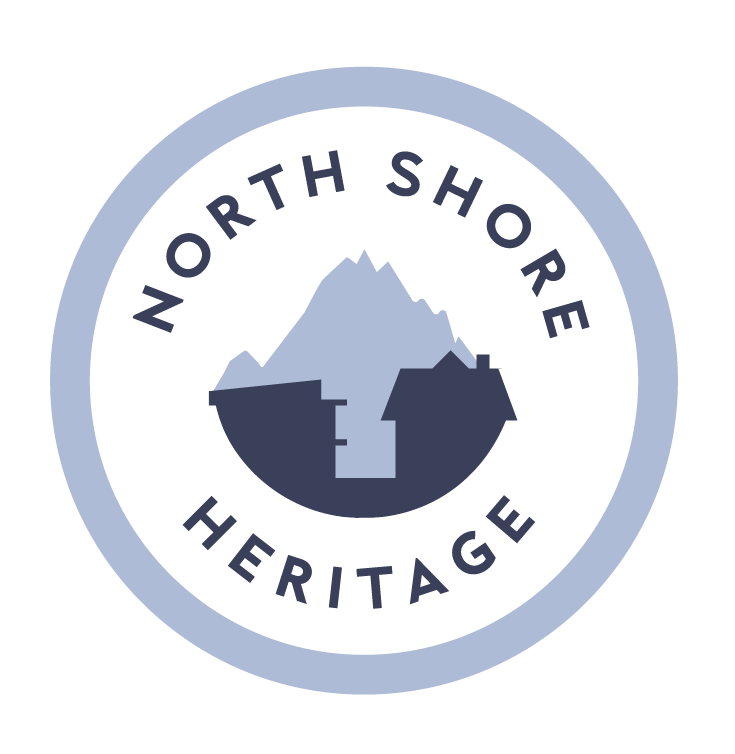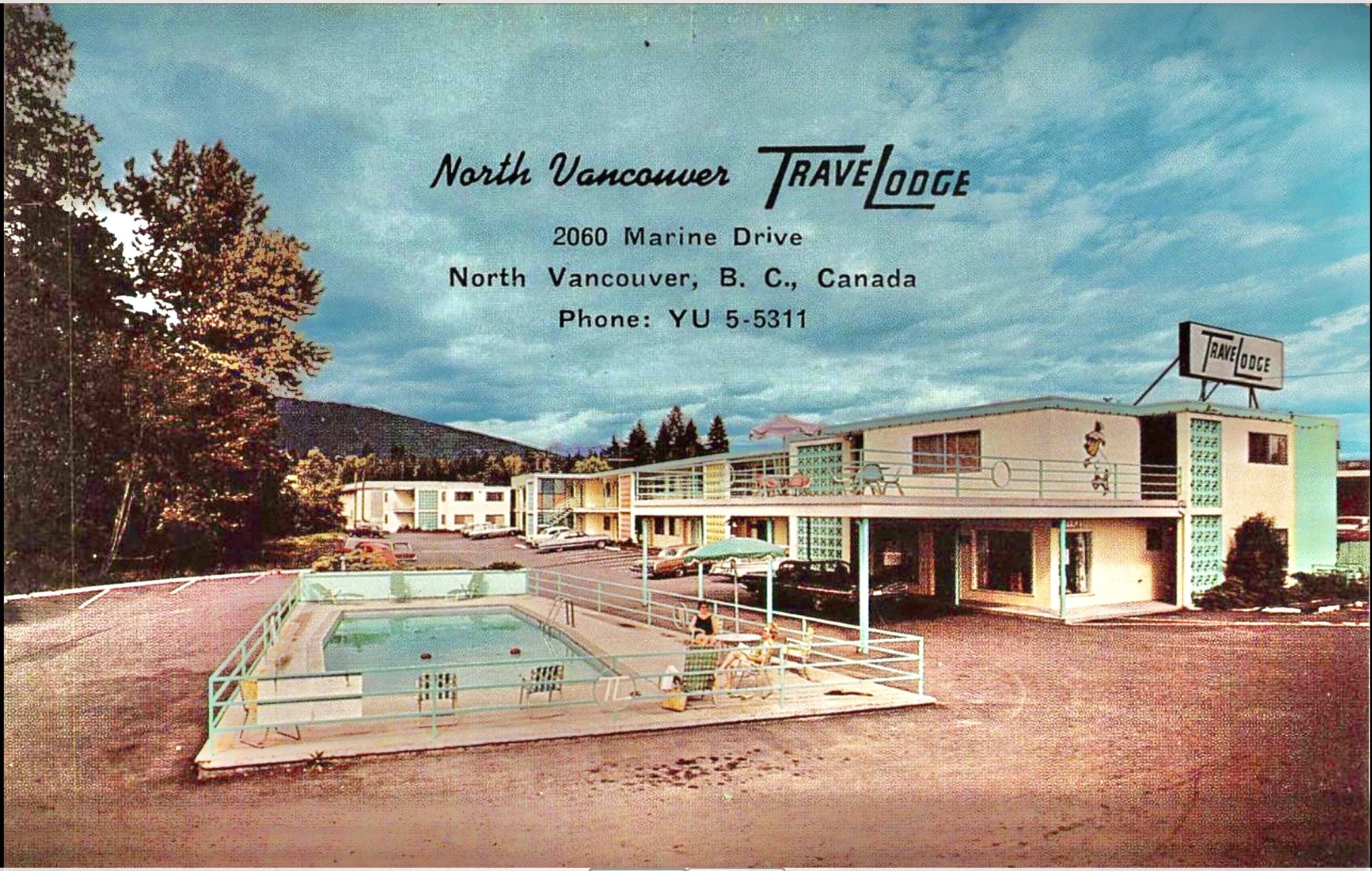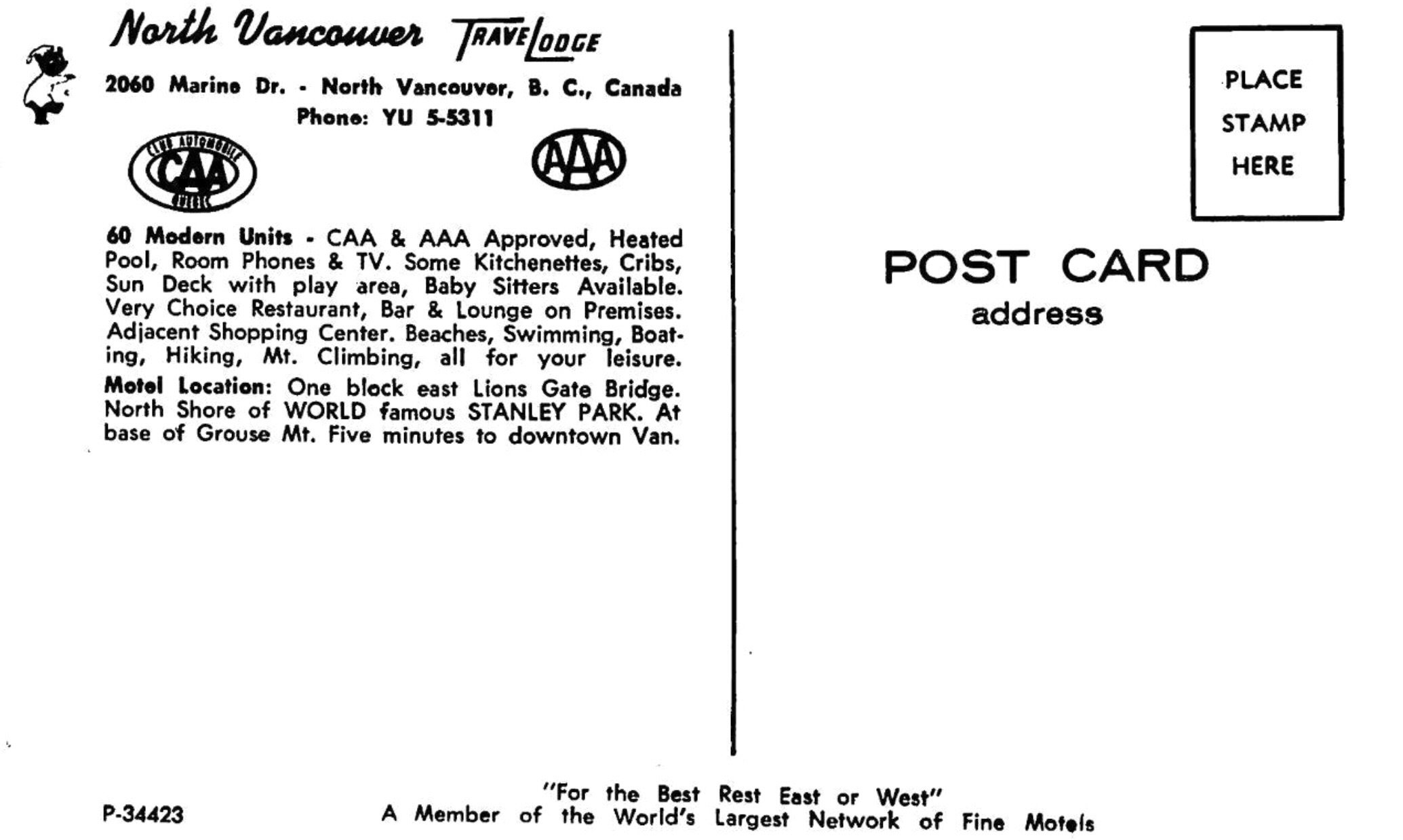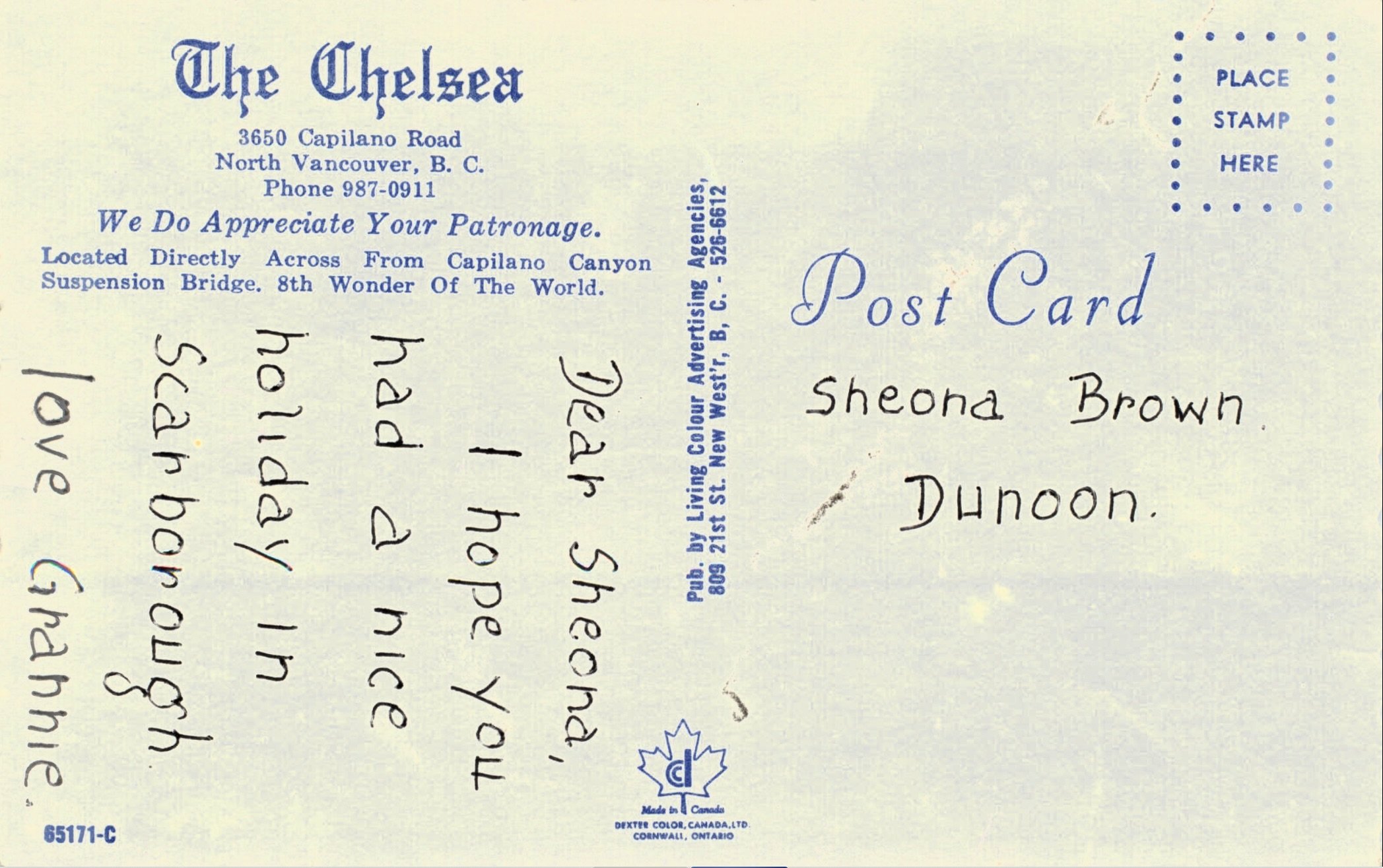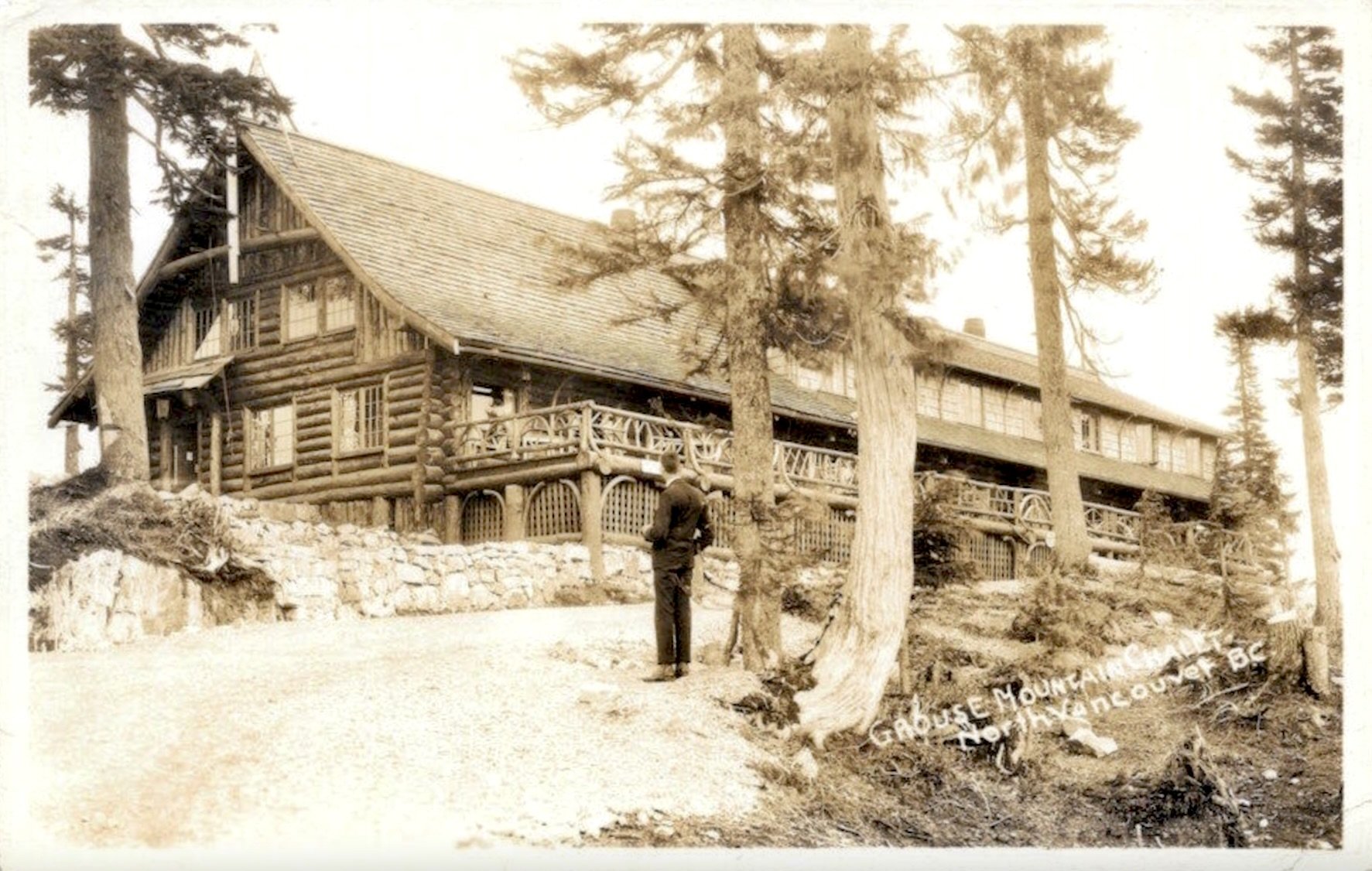The strange weather patterns this year led to an unusually long tourist season, as the hot weather continued well into October. I’ve been noticing a lot more tourists than usual in the Capilano area and it got me thinking about how nearly the whole of Capilano Road -from Marine Drive up to the top of Grouse Mountain- has been a tourist destination, full of natural wonders and interesting buildings, for well over a century. Many years before there was even a Lion’s Gate Bridge, people have made the trek from Vancouver by ferry to the North Shore and to the Capilano River area to visit places of natural beauty, mystery and intrigue.
Much of the natural and built heritage in the most western side of North Vancouver comes from places that played a large part in the tourism history of the Capilano River area. Some of the buildings that were in the area no longer exist -but many still do- as well as the natural wonders that were here well before tourism began in the last decade or so of the 19th century.
This post takes you on a short tour via some postcards from the early 1900s to the mid-century, starting near Marine Drive and Capilano Road, heading straight up Capilano, and ending at Grouse Mountain. The cards shown are by no means an exhaustive list, as the area has and has had many more tourist stops. Each place has a long history and has contributed to countless stories, from the strange and quirky to the poignant and heroic, and would easily fill a large book, but for the sake of brevity I chose just a few that I’ve come across recently with a small write-up for each one.
Capilano Gardens: (1920’s) These unique gardens full of interesting topiaries were at the corner of MacGowan and Marine Drive in North Vancouver. It wasn’t a commercial property, only the product of an imaginative and eccentric homeowner, Napoleon St. Pierre, but became a famous enough tourist stop to have had a number of postcards made of it. St. Pierre told fortunes and read horoscopes for a fee and was apparently so popular on Sundays that the road became blocked.
St. Pierre’s rival across the street, was a dairy farmer named Billie Wilkins, nicknamed the “yodelling milkman”. He ran Dew Drop Tea Gardens and rivalled St. Pierre’s seer service by hiring an Indian man to tell fortunes along with the tea.
St. Pierre’s home and gardens are long gone, along with their 1501 Marine drive address, but the La Cucina Restaurant is close to where they stood. Wilkin’s dairy farmhouse was moved from it’s original spot across the street from St.Pierre’s place, but it still stands, in a well-preserved heritage state, not far from where it used to be, at the foot of MacGowan ave.
Postcard published by Gowen Sutton.
Built in 1965, the Travelodge still stands today. The pool was filled in and paved over years ago and the lovely green has been painted over by a neutral colour, but the building is still outwardly in its original form. This must have been a great place for families touring the area, with cribs, play area and baby sitters available!
Ranch Motel, corner of Marine Drive and Capilano Rd, 1633 Capilano Rd, built around 1960. It had a California motel feel to it and must have been quite a fun place to stay at the time, with a pool, a large lawn and a great view of the mountains.
Eventually, it became the Grouse Inn Hotel, and was demolished recently to make way for luxury condos, a shopping area and a community centre. The low profile of this motel was perfect to see the lovely views on the North Shore, but unfortunately, the current views from this corner are mainly tall buildings now.
City of Vancouver archives Am 1052 P-2038, photo by Rolly Ford.
MacEachern Residence, 3650 Capilano Rd, built 1934. This building has had a number of different businesses in it over the last 88 years.
Built by Archibald MacEachern (who was the Suspension Bridge lessee at the time) as his private residence. It became a restaurant called The Chelsea in the mid-century, closing in 1972, then in 1979, was a Hobbit-themed restaurant called The Hobbit House, complete with walls covered in Middle Earth Maps and Tolkien’s books. 1988 saw the Hobbit go on a new journey and the long running Bridge House Restaurant operated for many years until recently, when the interior was modified into a coffee shop, The Bridge House Cafe. I wonder what will be next for this quaint log cottage?
Capilano Canyon. The postcard at the left is from 1917. The other two don’t have a date but look to be between somewhere between the 1930s and 1950s. They were all published by Gowen Sutton.
Built from hemp rope and cedar planks, and suspended across the canyon in 1889 with the help of 12-year-old August Jack Khatsahlano (who would later become Chief of the Squamish First Nation), George Grant Mackay was the first to build a suspension bridge over the Capilano River. Mackay, a Scottish immigrant, bought 6000 acres of dense forest on either side of the Capilano in 1888, build a bridge and also built a small cabin. This cabin and bridge began to attract adventurers to the area. In 1903, after Mackay’s death, the bridge was re-strung with steel cables and opened to the public for 10 cents to cross. Ownership has changed over the years a few times, and the last and current owner, Nancy Stibbard bought the attraction from her father almost 40 years ago and has continued developing it as a tourist attraction ever since.
Although the Suspension Bridge site is the most developed tourist area by the Capilano River, a large portion of the Canyon and it’s hiking trails, fish hatchery and dam- all in Capilano River Regional Park- have also been popular places for to visit for many years for those who like it less crowded and are looking for a place to visit without an admission charge.
Tipperary Tea Gardens postcard. This rustic teahouse also had cabins on the property that were rented out. The address listed in old newspaper ads is the same address as the current building there, which housed the Chinese Restaurant, CC’s until recently. The teahouse advertised itself as a place where you could have tea while looking at salmon in the river through binoculars.
The Teahouse falls out of mention in local newspapers by the mid-1950’s. A roast beef restaurant called “Hadrian’s Garden” took it’s place, then long-running Chinese restaurant in 1972 called “CC’s” ( until it recently closed it’s doors in May of this year), and now a mixed use townhouse/condo/commercial building is in the works with plans to have a restaurant in the place where CC’s was.
Printed in 1915 by Gowen Sutton.
Canyon View Hotel. Opened in May of 1909, and at the Northern mouth of the Capilano Canyon by the second canyon bridge, the hotel was advertised as “The Finest Tourist Resort on the B.C. Coast” by “The Express” newspaper of North Vancouver. It was a resort hotel, full of amenities on the property, such as tennis courts, as well as countless activities to enjoy in the surrounding nature. It was open until the early 1950’s when it was demolished to make way for the Cleveland Dam.
Printed in Germany by the European Import Co.
Grouse Mountain Resort: The original chalet, built in 1926 above, bottom left, Skyride Terminus building at the top of the mountain, built in 1966, and bottom right, the first double chairlift in the world was built at Grouse.
First recorded summit to the top of Grouse was in 1894. Trip was a 3-4 day trek with no bridge from Vancouver and no road to the base. Many more hikers began making the climb. By 1926 the chalet was built, by 1929 Grouse had its own ski club and soon after, a rope tow.
By 1949 the double chairlift was built to bring people up the mountain and replace the 2-3 hr climb. The original chalet burned down in 1964, and the Skyride was built in 1966.
The resort has changed hands over the years a few times, but continues to be a popular destination for both tourists and locals alike. Much has changed on the mountain over the years, but the original sky ride terminus at the top of grouse is still there. However, this very mid-century and striking design is well hidden behind a lot of added building structures that expanded the building over the years. The original winged design with large windows was built so that you felt “suspended out over the magnificent views of Vancouver”
Photo of a mid-century Grouse postcard taken from an item on eBay.
Photo of postcard courtesy of Jennifer Clay.
Jennifer’s parents, Edith and Graham Clay, are pictured here in July 1961. This Grouse souvenir card was reminiscent of the street photos Foncie Pulice took on Granville st.
The tourist season appeared to be strong this year, which is great news after all the tourist industry has been through during the pandemic, but it’s hard for me not to wonder how climate change, large building developments and increasingly high admission fees to some tourist sites will be affecting tourism in the area in the future. What will tourism be like in the Capilano River area in another 130 years?
Sources:
“Where Mountains Meet the Sea: An Illustrated History of the District of North Vancouver,” by Daniel Francis, newspapers.com, North Shore News, The Georgia Straight, eBay, monova.ca, vancouverisawesome.com, The Vancouver Archives
